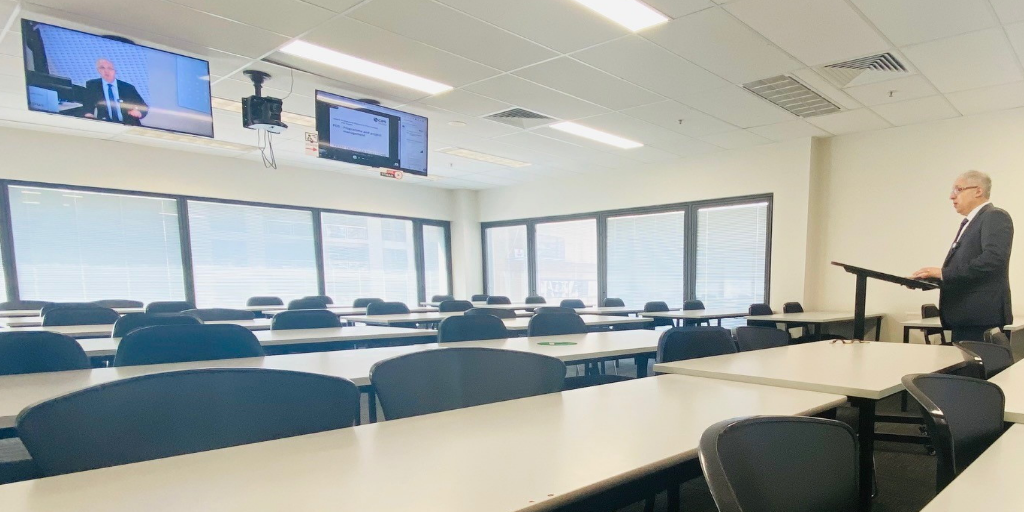
What Is Meant by ‘Hybrid’ Delivery and How Does It Work in Higher Education?
There appears to be some confusion in the Sector around the meaning and application of ‘hybrid’ delivery to higher education students including a view that the notion of teaching students on line and at the same time providing the option of being in the classroom requires two sets of activities – when in fact it is a simultaneous activity requiring no more preparation or time that teaching F2F.
Hybrid higher education
Essentially a well set up classroom – with elements of a TV studio added – provides the perfect setting and vehicle for a hybrid delivery. The more theoretical the subject – the easier the task. Practical classes provide certain challenges.
Requirements
To deliver the hybrid mode there are of course certain requirements.
Firstly, the activity needs to take place on campus – irrespective of the number of students wishing to physically attend the session. The lecturer/presenter in situ provides the option, then, of teaching to a fully online class or alternatively (and simultaneously) allowing students to sit in class (in a COVID-19 Safe manner) not unlike a live television audience model.
Secondly, there are certain IT requirements that are needed to ensure the quality of the delivery including quality picture (ideally a tracking camera); audio (essential) and supporting slides/graphics. Essentially we need to be aiming for TV quality output.
Thirdly, the lecturer/presenter needs to be aware of the fact that this is a ‘live’ presentation and requires a commitment to a dynamic (and dare I say entertaining) performance. Shuffling through notes, head down, coughing, grumbling and repetition is unacceptable.
Finally, it is not about recording a presentation and reusing it in subsequent trimesters/semesters. Recordings are valuable revision resources for students – but nothing can (nor should) replace live sessions, albeit on line or in F2F mode.
Future of hybrid
The hybrid model of delivery provides higher education providers with a genuine quality option that can be delivered effectively and efficiently and certainly without the double effort mistakenly proposed by some. Hybrid is not a short cut though – it is an attempt at a quality outcome given the extraordinary circumstances we find ourselves embedded. It also has far reaching opportunities for students who for whatever reason find access to provider facilities difficult.
Emeritus Professor Greg Whateley is currently Deputy Vice Chancellor, Group Colleges Australia






